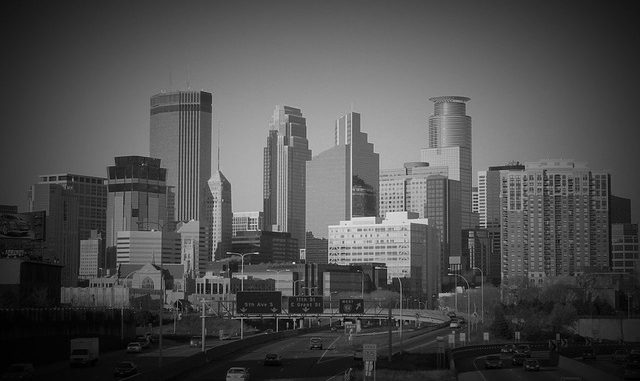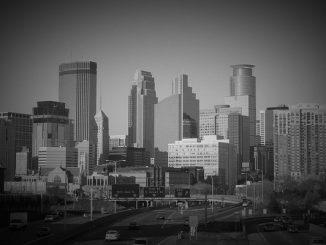
Making a city smart in terms of energy, projecting it successfully into an energy transition, mainly today to reduce CO2 emissions, can be a complex issue. As a result, it may be difficult to associate it with specific actions.
What must be done for this? What are the priority actions and arrangements to take an action over time on the road to success?
A smart energy city is, of course, a digital city. But it is a very descriptive way of defining it. In terms of stakes, it is a city respectful of the environment, sober, with consistent energy systems and sustaining a permanent improvement of performance.
I do not claim in such an article to be exhaustive. I give you the fruit of my experience by submitting to you the main generic actions to carry out. In real life, all must be adapted to the local situation.
1- Put in place a global governance of energy
This governance must bring together the public decision-makers and all the energy actors active on the managed perimeter: managers of networks of distribution of gas and electricity and district heating systems, producers of electricity and heat, producers and distributors of water, sewage and waste treatment operators, storage operators, local energy savings agency, leading energy service providers etc …
The governing body thus formed must define a master plan for energy for a minimum period of 15 to 20 year, consistent with the objectives set by the political authorities, and update it every 2 years. This last point is essential to follow technological and regulatory developments and consider the experience gained. It must also define a roadmap giving visibility to each stakeholder on its own issues and facilitate coordination, many between actors. Lastly, it must supervise, on a regular basis, the progress of the projects in order to correct any drifts in order to guarantee the achievement of the objectives set.
2- Public exemplary plan
The city’s evolutions cannot be accepted if it asks its inhabitants and its users to be “intelligent” and if it is not itself. An exemplary plan of the public actors is indispensable: it is not necessary to complete all actions at short notice but to plan them, and in a coherent way. But the public actors must demonstratively and massively open the path of intelligence.
This exemplary plan must at least cover the energy refurbishment of public buildings, the energy efficiency of public actors and activities, the production of renewable electricity, the mobilization of flexibility, a completely new mobility scheme of public actors and their partners in the city, changing ways of working to reduce the need for travel etc ….
The city will make extensive use of the contracting model and will be able to roll it out in advanced forms to increase its funding power.
This exemplary plan should not be a perfunctory plan at the risk of discrediting any later step: a mayor going by bicycle to an inauguration may have a symbolic aspect (although limited) but bouquets of flowers that follow him in a car just behind ridicule the symbol and is deeply counterproductive.
3- Carbon-free mobility plan
In the cities, transport is both energy intensive and highly CO2 emitting. Building a carbon-free and energy efficient mobility plan is necessarily a priority.
This plan cannot ignore several objectives:
. Decongest the city. Traditional solutions rely on public transport; easy-to-implement solutions include guidance applications; the promising solution is car-sharing, which is more difficult to implement because it requires a profound change in the relationship with the automobile.
. Reallocate space. Densify the city, improve the living environment by reducing the ground footprint, very important, transport.
. Do not think only electric cars but also electric deliveries, electric buses, cable transport, bicycles etc …
. Manage the transition of urban transport by maintaining the economic, commercial and cultural vitality of city centers.
. Engage residents and users. Some city officials do not hesitate to take brutal, unanticipated, unrepaired measures to initiate the transformation of transport: they create a widespread feeling of rejection among the population and discredit for long, actions in favor of a more environmental-friendly society. In wanting urgent steps, they dramatically slow down the movement.
4- Energy refurbishment plan of buildings
Energy efficiency is a vital component of an smart energy city. Without denigrating the other actions, the energy renovation of existing buildings is the action tackling the biggest savings potential.
It is also the most difficult to conduct, moreover in our European cities, old and strongly constrained by architectural rules, and, unsurprisingly, the most expensive.
The commitment of the owners in such work, the coordination of actions within buildings or, in some cases, neighborhoods are all issues to address successfully.
Basic modes of financing such as owner investment plus subsidies are not efficient enough to guarantee a satisfactory speed of action. It is necessary to reduce the initial funds required by using mechanisms introducing a leverage effect, such as contracting models.
The development of such models at the scale of a city requires adapted financial partners, well-functioning operational actors and a guarantee of the main risks by the insurances. Building a strong ecosystem is a prerequisite.
5- Plan new neighborhoods
The difficulty of changing the energy performance of existing neighborhoods is extremely important. The necessary work is expensive, potentially disruptive for the occupants and therefore difficult to plan. The standards of construction of a new district are therefore all the more important: they engage the energy performance of the neighborhood until the next major refurbishment ie for a period of 30 to 50 years. By defining these standards, a city must position itself as far ahead as possible, an attitude that is not always consistent with its habits. It should not be limited to current regulations but ahead of its evolution by making the most of new technologies available and not hesitating to innovate.
6- Establish a living master plan of energy
The energy master plan is a guarantee of consistency over time between all actions and all investments: it is therefore a source of energy and economic optimization.
Through the works and discussions that require a serious elaboration, it is also a vector of coherence between actors. It must be an opportunity for them to better understand each other and to adjust their organization and their joint work.
It must cover all the energies to define their links and their interdependence and to consider the transitions from one to the other. It must consider the necessary evolution of communication networks and data management infrastructure, as the multiplication of technical solutions to deal with unanticipated needs is costly in CAPEX and OPEX.
This master plan is not a document established to be implemented over a period of 25 years. The technologies, the needs, the objectives, the aspirations of the population are now changing too fast and require its almost continuous management: a review every two years to consider the impact of the changes is a minimum.
7- Define an urban plan “for energy”
Urban planning, itself, determines the energy performance of a city. A residential district induces an electrical consumption that is representative of the behaviors and habits of life of the households with its periods of low consumption and peaks of consumption (not necessarily corresponding to the periods of solar photovoltaic production, for example). The same neighborhood, hosting businesses and industries, will not have the same characteristics: for example, the consumption patterns of businesses will peak at the time when households will be in low consumption. The global peak will therefore be lower, investments in local production and distribution also.
A urban plan that optimizes the necessary energy infrastructure is based on rules that are different from the usual ones: it must therefore be defined precisely.
These 7 actions are decisive: they consider the sluggish evolution of energy systems, which consume a lot of capital, requiring an anticipation that is neither in the genes nor in the natural preoccupations of the political decision-makers.
They also concern mobility and buildings, two very complex issues of cities: the first because it requires a profound change in habits and therefore a radical change in transport infrastructure, the second because it is very expensive.
At a time when the acceleration of the cities’ energy performance is becoming vital, these 7 actions are the 7 “proofs of courage” that the elected officials must show to enter the 21st century and to allow their city to be described as “Smart” in the field of energy in the long term.
Receive every quarter all posts of the blog: [sibwp_form id=2]



Leave a Reply